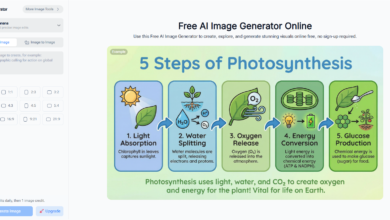Beyond Emails: How Remote Teams Benefit from Recorded Calls and Meetings

Emails. Slack threads. Project boards. Sticky notes pasted on virtual whiteboards. Sound familiar? It’s the digital jungle of remote collaboration. And while email remains a backbone of asynchronous communication, it often fails where nuance lives: in tone, timing, context. What did they really mean? Did I misread that? Remote teams—especially in creative industries—don’t just survive on bullet points. They breathe in voices, sketch in real-time dialogue, and need something more organic than a thread of text replies.
And so enters a quietly transformative hero: recorded calls and meetings. Not glamorous. Not buzzword-laden. But essential.
The Remote Design Workflow: Not Just Figma and Files
Think of a typical remote design workflow. There’s an idea, maybe scribbled on a napkin or shouted into a phone. It gets translated into a Figma frame. A round of critiques follow—half of them subjective, the other half floating in jargon. But the energy of that first brainstorming session? That’s what drives the final product. And if that energy lives only in a Zoom window, and is gone the moment you click “Leave,” you’re in trouble.
By recording meetings, you keep the heartbeat of the project intact. You allow team members in different time zones to re-watch the evolution of an idea. No one misses context. No one’s left piecing together emotion from an email thread that reads like a legal notice.
The Power of Playback: Why Conversation Recordings Matter
You’re in a call. The designer shares a concept that clicks. The PM nods. The copywriter throws in a metaphor that sparks a visual shift. It all happens quickly. And then… poof. If no one hits record, all of that insight vaporizes.
Here’s what recording conversations does:
- It preserves spontaneous insight. 68% of remote professionals in a 2023 Buffer survey reported that their best ideas come up during live calls—not while typing.
- It enhances accountability. “Did we agree on that layout change?” Well, let’s go to the tape. No more memory battles. Just facts.
- It helps new hires onboard faster. Want to understand the team’s tone, humor, and problem-solving approach? A playlist of recorded creative sessions does more than a handbook ever could.
- It aids cross-functional clarity. Developers can rewatch a design rationale call to understand the why, not just the what.
If you are worried about the complexity of implementing the functionality, you can simply use the call recorder app iPhone. Remote teams often choose the lightweight and powerful call recorder iCall. It does everything related to recording calls: recording in good resolution, data protection, and easy sending.
Email’s Limitations: Too Clean, Too Late
Emails give you clarity, sure. But they’re post-processed, sterilized. Drafted. Edited. Reviewed. By the time they hit your inbox, the original thought has been chewed up and spit out into corporate-speak. Now, imagine a design critique reduced to email: “Please consider exploring alternate typography.” What did they really mean? Did they hate the typeface? Were they just being polite?
With recordings, you hear the sigh. The pause. The laughter. All those unspoken signals that humans have evolved to interpret subconsciously. Remote teams, spread across continents, need that. Not just a ping.
Synchronous Memory in an Asynchronous World
Let’s say you’re based in Helsinki, your UI lead is in São Paulo, and your client is bouncing between Tokyo and London. Real-time collaboration becomes a puzzle of calendars and alarms. You’re not going to get everyone in the same Zoom daily. That’s fine. Because you don’t need to. Not if you’ve recorded the last meeting, clipped the relevant 12 minutes, and shared it with time-stamped notes.
Tools like Loom, Notta, and Zoom’s cloud recorder aren’t just for capturing meetings. They’re memory machines. And in this global economy of mismatched clocks, memory is money.
Unexpected Benefits You Probably Haven’t Considered
Now, let’s step outside the usual pitch. Here’s what recordings do that no one talks about enough:
- They protect your team legally. If a client disputes what was agreed upon—roll tape.
- They sharpen feedback. Listening to yourself on a call can reveal things you never noticed: you talk too much, interrupt unknowingly, or miss queues. Self-review = growth.
- They empower introverts. Not everyone shines on live calls. Some teammates prefer to contribute after listening and reflecting. Recording makes space for all personalities.
- They boost transparency. Design leads, stakeholders, and junior teammates can all access the same source of truth. No whispers behind decisions. No hearsay.
The Flip Side: When Not to Record
Let’s not pretend recording is perfect. People behave differently when they know they’re being recorded. Some hold back. Others perform. That’s fine. You don’t record everything. You record strategic touchpoints: kickoffs, major brainstorms, final reviews. Save the rest for Slack or 1:1s.
Privacy also matters. Be clear about what’s being recorded and why. Consent isn’t optional. It’s table stakes.
Numbers Talk: A Quick Look
Here’s what the data says:
- According to Owl Labs’ 2024 “State of Remote Work” report, 45% of remote teams that regularly record meetings report fewer miscommunications.
- A study by Chorus.ai showed that sales teams who reviewed call recordings closed 23% more deals, thanks to clearer recall and messaging improvements. Extrapolate that to design, product, or strategy—same benefit, different context.
- 61% of creative professionals say that playback of meetings helps them spot missed insights or inspiration the second time around. You can’t rewind a live meeting—but you can replay it later.
The Human Touch (Captured Digitally)
At the heart of all this is one simple idea: teams are made of people, and people communicate best when their full selves are present. Voice. Tone. Pauses. Eye-rolls. All those things email can’t deliver.
Recorded calls and meetings don’t just capture conversation. They capture culture. They reflect how decisions felt, not just what was said. And in a remote design workflow—where subjectivity and emotion often fuel the product—they’re not optional. They’re foundational.
Final Note: Don’t Abandon Email, Just Upgrade the Stack
We’re not waging war on email. We’re just saying: don’t stop there. In the orchestra of remote collaboration, email is the sheet music. Recordings? They’re the jazz improvisation that makes the music human.
Your team already talks. Start listening. Again and again. And again.

